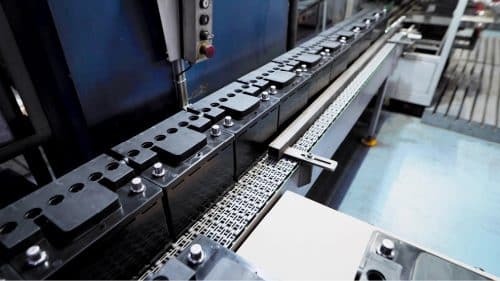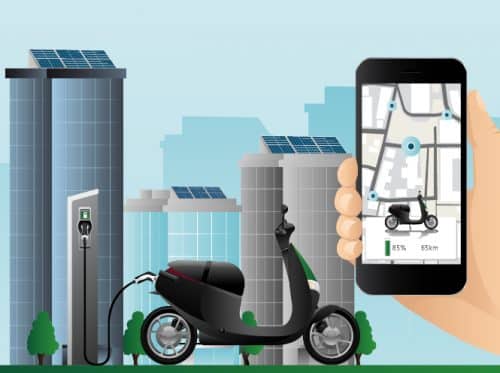Battery technologies have emerged significantly, and batteries are now used in diverse applications such as portable electronic devices to electric vehicles. The article is based on a panel discussion at the Battery Tech Show 2021 among the panelists Savio Monteiro, Senior Vice President, Energy, Oil & Gas and Utilities, Praxis Global Alliance; Ashwin Shankar, CEO, BatteryPool; Shreyas Shibulal, Founder and Director, Micelio Mobility; and Naresh Neelkantan, Senior Architect, Sasken Technologies.

With the evolving need for energy storage technologies, we can expect new and improved chemistries replacing the lithium-ion (Li-ion) batteries that are currently dominating.
According to Shreyas Shibulal, Founder and Director, Micelio Mobility, there are a couple of reasons behind this dominance of Li-ion batteries. The first is their much higher energy densities than many others, which enables their compact packaging. The second is the high life cycle of these batteries.
The various commercially available Li-ion batteries are lithium-manganese oxide (LMO), lithium-iron phosphate (LFP), lithium-nickel manganese cobalt oxide (NCM), lithium-nickel-cobalt-aluminium oxide (NCA), and lithium-titanium oxide (LTO). Each of these has its own pros and cons. Savio Monteiro, Senior Vice President – Energy, Oil & Gas and Utilities, Praxis Global Alliance, informs that the NCM batteries NCM622 and NCM811 are improving the battery technologies in terms of energy density and life cycle.
Shedding light on the roadblocks hampering the progress of battery technologies in India, Shibulal says, “Thermal management is the biggest roadblock. The weather conditions and temperature constraints are important aspects that manufacturers keep in mind. The temperature in India goes as high as 48 to 50°C, but the batteries available today are suitable for only up to 40°C.”
High temperature causes the liquid electrolyte between the cathode and anode to expand, putting stress on outer casings and making them prone to bulging, cracking, or even puncture. So, they need a porous barrier to limit chemical activity. Moreover, extreme heat causes combustion readily, so as the temperature increases further, there is a possibility of explosion or at least degradation of the battery capacity. EV batteries, therefore, must be equipped with cooling systems, which makes them more expensive.
Fortunately, some newer designs such as solid-state and sodium-ion batteries are safer. No separators are required in these, leading to space saving and shrinking battery sizes. Solid-state batteries also have a longer lifespan. However, there is a huge amount of work that needs to be done to make sure these batteries are viable for the commercial market.
Extensive research is going on to develop graphene and metal-air batteries. Shibulal affirms that hybrid ultracapacitor batteries are also being developed, which would use supercapacitors for fast charging while maintaining the energy density of the batteries.
Naresh Neelkantan, Senior Architect, Sasken Technologies, says about the future of battery technologies in India, “The raw material supply security is an important parameter in the context of a sustainable battery manufacturing ecosystem. India does not have reserves of lithium, added to which there is heavy dependency on imports for cobalt and nickel as well. These are critical raw materials for some front-runner lithium-ion battery systems.” He informs, India is gradually breaking into the sectors of mining. Going ahead, the growth in the resources for battery manufacturing will play a major role in the development of an ecosystem in India.

Battery demand
Ashwin Shankar, CEO, BatteryPool, believes that unlike the technologies of the past, the demand for batteries will majorly come from the Indo-Pacific region which has a combination of fast-growing and energy-hungry economies. A lot of countries in this region are looking for energy security in the long term. In India, we have policies and subsidies driving the adoption of battery technologies, both from the supply side and the demand side.
The automotive industries require batteries of high performance at elevated temperatures as well as high capacity with more range and life-cycle, making current automobile OEMs take a more proactive approach towards the research and development of solid-state batteries. Due to continuous electrochemical processes happening inside a battery due to charging and discharging, after a few hundred charge-discharge cycles, the battery’s internal resistance increases significantly, and the battery can no longer be used for applications such as electric vehicles.
Ashwin points out an interesting aspect of the batteries used in electric vehicles. When these degrade and are left with only 70% state of health (SoH), becoming unsuitable for use in EVs, the batteries can be used for backup power in grids. This creates room for new value chains around batteries.
The biggest consumers of batteries currently are the consumer electronics and mobility sectors. Renewable energy systems are gaining traction to meet energy demands and lowering emissions. Complimenting that, we need batteries to store that energy and distribute it when needed.
Both Ashwin and Shreyas think that the demand for new-age batteries will be in the area of aviation for applications like drones and further in smart-city technologies, most importantly for grid storage. But according to Savio, “If power cuts are high (say, more than four hours), battery storage would become a difficult proposition as the current storage has only 4-hour backup; hence, diesel generator (DG) sets still continue to be a viable option.”
Talking about evolution of energy storage requirements in commercial and industrial sectors, the economics of using Li-ion batteries or advanced lead-acid batteries for behind the meter applications does not make much sense. The DG sets are much cheaper and more reliable than battery packs. As we scale up the supply of batteries, we see that changing and, in the next 3-5 years, the economics of it could start favouring their usage behind the meter energy storage.

Swappable batteries
EVs survive on batteries and are hence inseparable from each other. But unlike yesteryears, when EVs had only fixed battery systems, swappable batteries are giving competition to their non-removable counterparts. Ashwin explains, a fixed battery system is one where the battery is embedded in the chassis of the vehicle and is non-removable, whereas a swappable battery is one that can be removed from the vehicle and replaced with a charged battery.
There are of course some differences in vehicles designed for fixed vs swappable batteries. In a fixed battery system, the chassis is designed for a fixed battery. In a vehicle designed for swappable batteries, the batteries have to be easily removable, and must be able to withstand mechanical vibrations. Also, in a swappable battery system, the batteries connect and disconnect frequently, and therefore the connectors have to be designed accordingly.
Indian 2-wheer manufacturer Hero MotoCorp is partnering with Gogoro, a pioneer in swappable battery systems in the 2-wheeler space. But firms like Ola Electric and Aether have made their bets on fixed battery systems. According to Ashwin, the concept of fixed and swappable batteries is a little nuanced. In practical cases, where the usage of the vehicle is not so extensive, a fixed battery would be a better option as the vehicle is charged every night or while in parking. In cases where the vehicle travels 80-100 kilometers a day, where recharging is not convenient, a swappable battery may be needed.
Such vehicles include commercial fleets such as e-rickshaws or last mile delivery vehicles. Any downtime in such cases creates a loss of significant revenue. In nutshell, private vehicles could look at fixed batteries whereas the commercial fleets may require swappable batteries so they do not waste productive time in recharging.
Shreyas thinks that it is not one size fits all with batteries and mobility. When it comes to swappable batteries, their faster turnaround time is very advantageous. Moreover, it also allows the economy to play around different models of ownership of the battery, bringing down the cost of ownership of vehicles.
However, there are challenges and hurdles in the swappable batteries model as well. The concept of swappable batteries has emerged in the last couple of years. Though it is preferable in fleet and commercial workspace, challenges with respect to standardisation, energy specifications, form factors, connectors, etc persist.
As per Ashwin, a major challenge faced is in the case of commercial vehicles. Their operators do not wish to invest on the batteries. But financing in this area has still not been figured out.
As regards battery swapping in private 2-wheelers, the economics do not make sense as the battery prices are falling. Hence, for personal vehicles, fixed batteries are relevant.
Shreyas points out that the problem of standardisation and interoperability is a regulatory issue. For swappable batteries, the battery has to be compatible with the vehicle used, which is also a roadblock at present.
Fast charging infrastructures are growing rapidly and there is a decrease in the need for swappable batteries (at least in private vehicles). But in the commercial space, according to Shreyas, from an affordability perspective, the fast charging technology is not there yet.
The stations may become more energy efficient and fast, but another challenge of fast charging stations (or any charging stations) is their dependence on the power grid itself, which is unreliable in certain parts of the country. This is a larger infrastructure challenge than what can be perceived from the urban context with 2- and 3-wheelers.
Ashwin believes that setting up battery swapping stations at convenient places would boost the penetration of swappable batteries. The swappable stations could be set up at warehouses, where the drivers of commercial EVs keep coming back.
Battery recycling
Batteries consist of toxic heavy metals, which, when discarded carelessly, can pollute the air and soil. With increase in the number of batteries, a significant problem of battery waste disposal and recycling arises, which can have serious environmental implications.
With popularity of EVs growing exponentially, so would the pile of used Li-ion batteries in the landfills. If present trends for handling spent batteries hold, most of the batteries will end up in landfills, even though these can be recycled.
The batteries consist of valuable metals and other materials that can be recovered from the spent batteries. They can be processed and reused. However, very little recycling goes on today. But with the sustainable energy changes happening around the world, the battery recycling sector is also growing by leaps and bounds.
Shreyas says that degraded batteries are a burden to industries and battery recycling is going to be a tremendous opportunity in the next couple of years by when the first generation of batteries will start arriving for recycling. He thinks, battery recycling is one of the spaces which would become highly regulated. “There is going to be a sufficient amount of pressure by regulators on the private sectors to pick up their trash and recycle it accordingly.” Therefore, regulations would be a driver of creating these ecosystems down the road.
Alternative to lithium-ion
Li-ion, though a standard battery technology today, also has some disadvantages in terms of safety and degradation. Researchers and engineers across the globe are trying to come up with new chemistries that can overcome the challenges of Li-ion batteries and provide performance benefits as well.
According to Shreyas, hybrid ultracapacitor batteries are probably going to emerge in the next couple of years. Among some slightly long-term technologies, solid-state batteries will emerge due to their high energy density and relatively simple thermal management. He also talks about metal-air batteries with aluminium. “India has a substantial amount of deposits of bauxite, from which aluminium is made. This presents itself as an opportunity if metal-air batteries become widespread. However, this technology is in its early stages of development and the energy density and output power of those batteries is quite limited now.”
Ashwin says, these advancing technologies must not only be benchmarked against Li-ion batteries in laboratories, but the important steps include getting these technologies from laboratories to the field environment, in order to mass produce and make them affordable for mass usage. He adds that Li-ion batteries have been with us for the last 40 years now and are today used in almost all energy-storage situations. According to him, Li-ion batteries are here to stay for the foreseeable future.

Battery manufacture in India
The government’s target to have an all-electric fleet by 2047 has given a major push to the automotive industries to manufacture batteries in India. Currently, India lacks the battery manufacturing ecosystem and, as a result, the import of batteries is leading to increased drain on foreign exchange. So, this is a wonderful time to establish a battery manufacturing ecosystem so as to cater to the EVs of the future.
Shreyas suggests that the biggest thing would really be securing the raw materials required for the manufacturing process. High degree of indigenous effort is required at this stage for long-term benefits. If we are able to diversify the supply chain, and not be dependent on any particular country, that would be strategically a good move to sustain the battery ecosystem in the country.
As per Ashwin, the only way to make the economics of battery technology work is when there are economies of scale. Thus, creating policies that really spur investment in battery manufacture on a large scale is an essential step. Savio says, it requires convincing private sector companies to take lead in setting up the battery ecosystem, while the government creates.








